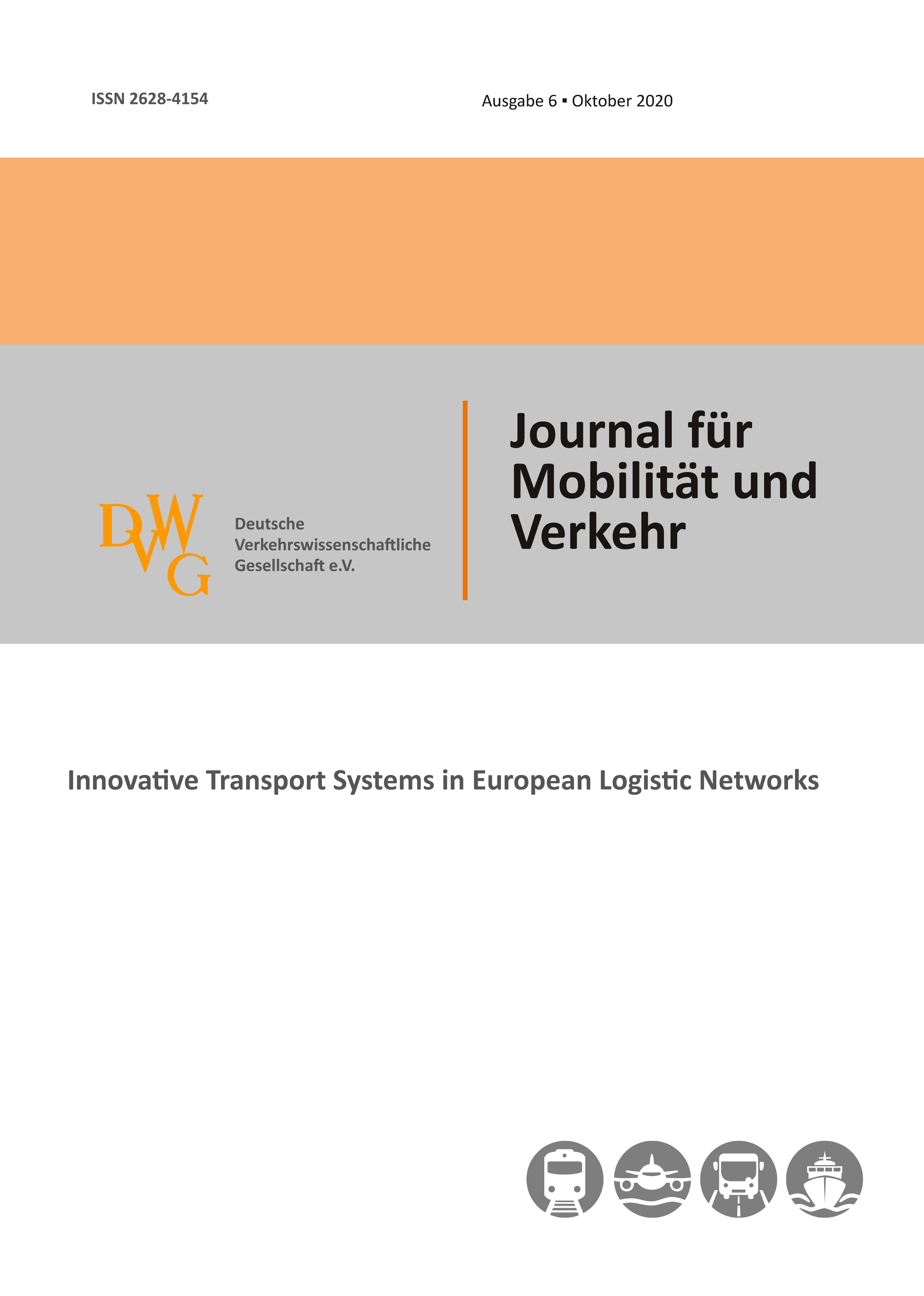Effects of Connected and Automated Vehicles in a Cooperative Environment
DOI:
https://doi.org/10.34647/jmv.nr6.id45Schlagworte:
Traffic Management, Smart Solutions for safe, Efficient and sustainable traffic flowAbstract
Cooperative and automated vehicles (CAVs) are often considered a mean to improve quality of life in cities, the traffic flow parameters in particular. This paper provides some evidence based on microscopic traffic simulation on how the effects can really be. Important is that the particular use cases are not built in vehicles only. We focus on so called cooperative environment and advanced traffic control measures.
This paper describes the impact of CAVs on a cooperative urban environment, resulting from a European research project - MAVEN. We clearly demonstrate that a proper integration of CAVs into city traffic management can, for example, help with respect to the environmental goals and reduce CO2 emissions by up to 12 % (a combination of GLOSA and signal optimization). On corridors with a green wave, a capacity increase of up to 34% was achieved. Already for lower penetra- tion rates (20% penetration of CAVs), there are significant improvements in traffic performance. For example, platooning leads to a decrease of CO2 emissions of 2,6 % or an impact indicator by 17,7%.
Literaturhinweise
Ross, C. and Guhathakurta, S. Autonomous Vehicles and Energy Impacts: A Scenario Analysis, Energy Procedia, Volume 143, 2017, Pages 47-52.
https://doi.org/10.1016/j.egypro.2017.12.646
Sousa N, Almeida A, Coutinho-Rodrigues J and Natividade-Jesus E (2017) Dawn of autonomous vehicles: review and challenges ahead. Proceedings of the Institution of Civil Engineers - Municipal Engineer 171(1): 3-14.
https://doi.org/10.1680/jmuen.16.00063
Sivak M and Schoettle B (2015) Influence of Current Nondrivers on the Amount of Travel and Trip Patterns with Self-Driving Vehicles. The University of Michigan Transportation Research Institute, Ann Arbor, MI, USA. UMTRI-2015-39.
Harper C, Hendrickson C, Mangones S and Samaras C (2016) Estimating potential increases in travel with autonomous vehicles for the non-driving, elderly and people with travel-restrictive medical conditions. Transportation Research Part C: Emerging Technologies 72: 1-9
https://doi.org/10.1016/j.trc.2016.09.003
Alessandrini A, Campagna A, Site P, Filippi F and Persia L (2015) Automated vehicles and the rethinking of mobility and cities. Transportation Research Procedia 5: 145-160
https://doi.org/10.1016/j.trpro.2015.01.002
Ambühl, L., F. Ciari and M. Menendez (2016) What about space? A simulation based assessment of AVs impact on road space in urban areas, 16th Swiss Transport Research Conference, Ascona, Switzerland, May 2016.
Heinrichs D. (2016) Autonomous Driving and Urban Land Use. In: Maurer M., Gerdes J., Lenz B., Winner H. (eds) Autonomous Driving. Springer, Berlin, Heidelberg
https://doi.org/10.1007/978-3-662-48847-8_11
Ferreira, M., Damas, L., Conceição, H., d'Orey, P.M., Fernandes, R., Steenkiste, P., & Gomes, P. (2014). Self-automated parking lots for autonomous vehicles based on vehicular ad hoc networking. 2014 IEEE Intelligent Vehicles Symposium Proceedings, 472-479.
https://doi.org/10.1109/IVS.2014.6856561
Metz, D. 2018. Developing Policy for Urban Autonomous Vehicles: Impact on Congestion. Urban Science. MDPI, Vol. 2/33
https://doi.org/10.3390/urbansci2020033
Wadud, Z., MacKenzie, D. and Leiby, P. (2016). Help or hindrance? The travel, energy and carbon impacts of highly automated vehicles. Transportation Research Part A: Policy and Practice 86, 1-18.
https://doi.org/10.1016/j.tra.2015.12.001
Blokpoel, R. et al. 2018. MAVEN Project - Managing Automated Vehicles enhances Network. Deliverable No D4.4 - Cooperative adaptive traffic light with automated vehicles. Technical report. p. 116
Pribyl, O. et al. 2019.MAVEN Project - Managing607Automated Vehicles Enhances Network. Deliverable No D7.2 - Impact Assessment, Technical Report. p. 168

Downloads
Veröffentlicht
Ausgabe
Rubrik
Lizenz
Copyright (c) 2020 Ondrej Pribyl

Dieses Werk steht unter der Lizenz Creative Commons Namensnennung - Nicht-kommerziell - Keine Bearbeitungen 4.0 International.

